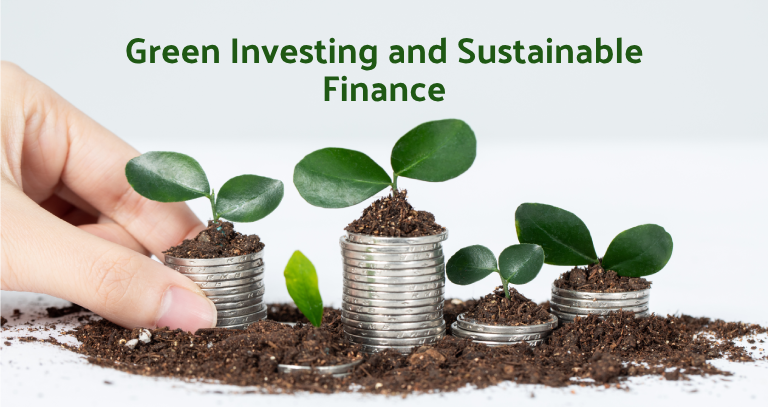The 21st century, the period from the year 2000 and onwards has been an era of great environmental importance.
With global warming at its peak, the era saw an increase in environmentally conscious individuals who want to contribute to the protection of Mother Nature.
With an aptitude to commit to sustainability, a lot of investors are turning towards green investing and sustainable finance.
This paradigm shift to green investing focuses on the importance of ESG (environmental, social, and governance) factors while making investment decisions.
This blog will help you navigate into the details of green investing, focusing on what is green investing, what are ESG factors, what is the impact of green investing as well as how to start green investing.
What Is Green Investing?
When an individual makes an investment decision considering environmental as well as social criteria in addition to traditional financial factors, they are said to carrying out green investing, also known as sustainable finance investing or socially responsible investing.
The key goal of individuals implementing green investing is to support those investments in their portfolio that are of companies that are carrying out initiatives prioritizing sustainability, environmental responsibility as well as positive social impact.

What Are Environmental, Social & Governance (ESG) Factors?
The backbone of Green Investing, ESG factors refer to the triple bottom line that governs sustainable finance.
For an investor to choose investments for green investing, they usually evaluate the portfolio’s performance in 3 major areas namely Environmental, Social, and Governance factors.
The ESG factors include the following key criteria –
- Environmental Factors – Evaluating the environmental factors of a company implies that the investor studies the impact that the company has on the environment. This is done by researching the company’s carbon footprint, resource usage as well as commitment to energy that is renewable.
- Social Factors – Evaluating the social factors of a company implies that the investor studies the relationship that the company has with its employees, suppliers, customers as well as the broader committee. This is done by researching the company’s labour practices, diversity & inclusion policy as well as community engagement.
- Governance Factors – Evaluating the governance factors of a company implies that the investor studies the leadership, management practices as well as overall corporate governance of the company. This is done by researching the company’s executive compensation, board diversity as well as transparency.

Impact Of Green Investing
Green investing shifts the goal of the investor from profits to a greater purpose in life.
This purpose is the environmental consciousness of the investor due to which they make their contributions to Mother Earth by indulging in Green Investing and reducing their carbon footprint.
Green investing has the following impact –
- Environmental Stewardship – The major goal of green investors is to mitigate climate change and hence, they invest in companies and initiatives that direct their capital towards environmentally friendly practices. Some of the initiatives that investors are interested in and invest profusely include developing clean energy technology, adopting sustainable practices while carrying out the company’s operations as well as promoting energy efficiency.
- Social Responsibility – In addition to environmental impact, green investing also focuses on social responsibility and aims to foster positive change. Through green investing, the company generally invests in a company that prioritize fair labour practices, community development as well as diversity & inclusion thus promoting positive social change and contributing towards a society that is more sustainable as well as equitable.
- Governance And Ethical Leadership – Green investing is trickier than traditional financial investing and requires a lot of trust factor between the investor and the company they invest in. As a result, green investors generally invest in companies that have ethical leadership as well as transparent business practices building trust amongst the investors. Additionally, companies having good governance and ethical leadership reduce the potential risk of fraud and corporate misconduct.
How To Start Green Investing
Some individuals want to become green investors but they lack the knowledge of how to start green investing.
To help such investors, the following are the practical steps that an investor should take to start green investing –
- Educate Yourself – Before making green investments, it is important that an investor educates themselves about the various ESG criteria, how companies are rated for the ESG criteria and what are the ratings that companies have gotten. Once you familiarize yourself with the entire ESG rating criteria as well as the rating of companies as given by the ESG rating agencies, you can make an informed investment.
- Set Investment Goals – An investor must clearly set their priorities depending on the values that they value the most. It is possible that an investor may be more interested in a social factor than an environment or governance sector or vice versa. Therefore, it is important to set your goals and priorities straight so that you can invest in projects that matter the most to you.
- Diversify Your Portfolio – As in a traditional financial portfolio, the green investing portfolio should also be diversified with ESG-focused funds and Exchange-traded funds (ETFs). This will diversify the portfolio of the investor with various ESG-focused companies exposing the investor to a variety of diverse sustainable businesses.
- Evaluate Companies Directly – If you have a very good understanding of the market, you can directly invest in the stocks of a company that has a good ESG score based on a strong ESG performance. An individual can access this information either through the annual reports of the company or various platforms that provide the ESG score of stocks to make an informed decision.
- Engage With Companies – As a green investor in the company, you can influence the movement of the company towards stronger ESG-related performance. An investor can achieve this by actively participating in shareholder meetings, and participating during proxy voting to advocate for improved ESG practices leading to active engagement and a drive of positive change!
Conclusion
Green investing is the investor’s way of contributing towards sustainable finance and a world that is sustainable as well as equitable.
With a better understanding of green investing and more green investors on board, we can fight the repercussions of climate change that have adversely affected this generation and will affect future generations as well!




